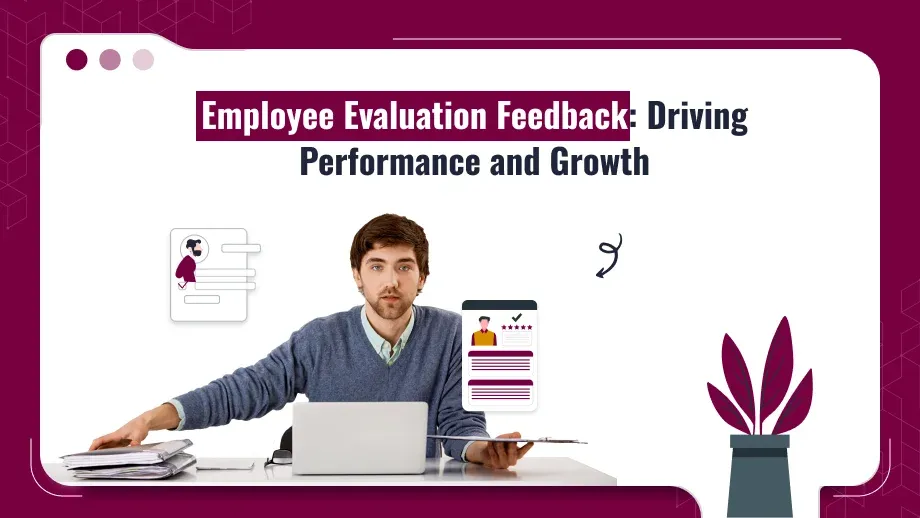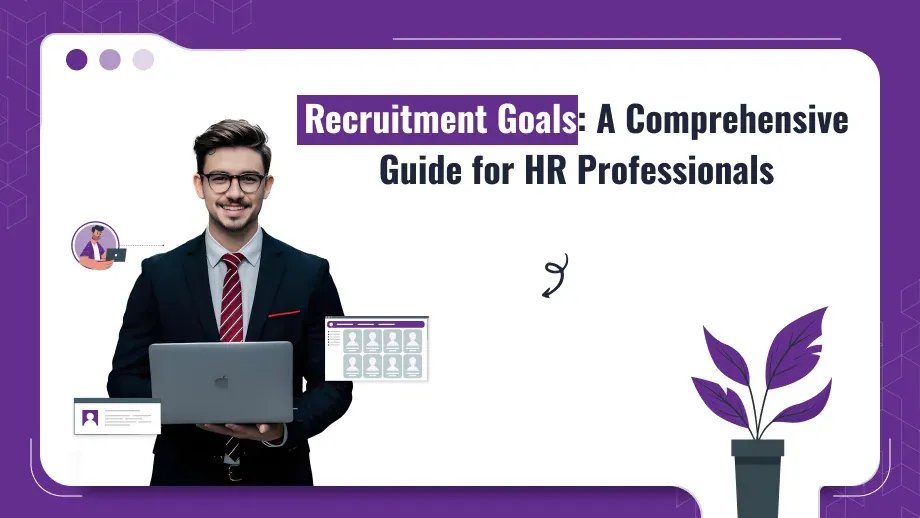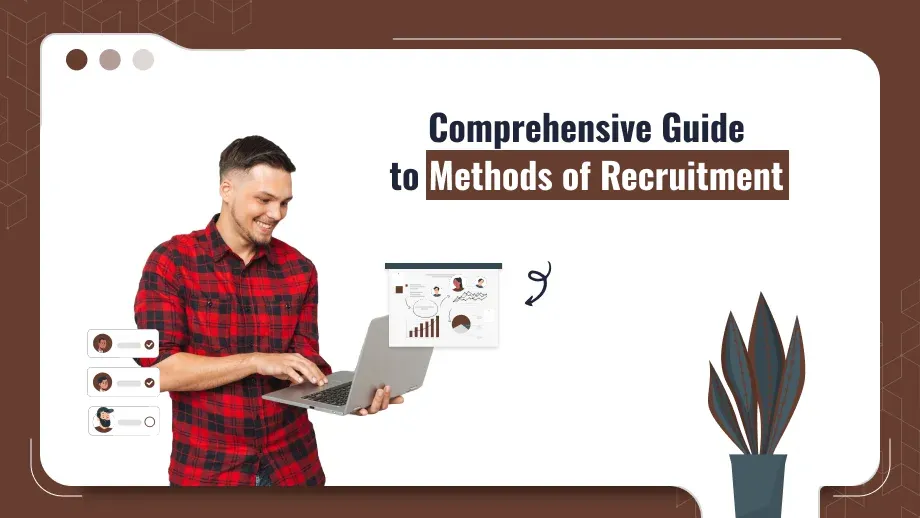
Employee evaluation feedback is not just an HR tick box—it’s a strategic tool that drives performance, development, and retention. In competitive markets, the organizations that have a feedback culture are the ones that build strong motivated teams that deliver long-term success. So HR, managers, and executives need to treat employee evaluations as seriously as any other business-critical task.
HR managers and CHROs consider employee evaluation feedback as part of their overall performance management strategy. Feedback mechanisms whether through formal appraisal feedback sessions or ongoing informal evaluations keep employees aligned to the company’s strategic goals. It also allows recognition of employee achievements and areas for improvement.
The Power of Structured Feedback
Structured employee evaluation feedback is the foundation of a productive workforce, providing insights on how to be productive and improve performance. Whether it’s to improve performance, boost employee engagement, or increase organizational productivity, structured feedback gives clarity and direction. But what exactly makes structured feedback so important?
For Employees:
- Clear Desires: Workers perform best when they have a clear understanding of what’s expected of them. Structured employee evaluation input sets particular targets and helps employees see how their work contributes to the company’s goals.
- Personal Growth and Development: Timely feedback allows employees to hone their skills and work on areas of improvement, towards their long-term career goals. This is where regular evaluations for employees tie into career development plans, so high-potential employees are supported in their professional growth.
- Job Satisfaction: When employees receive feedback that recognizes their strengths and addresses areas for improvement constructively, they feel more engaged and valued. This is especially true when appraisal feedback is used as much as a tool for recognition as for criticism.
For Organizations:
- Increased Efficiency: Input that’s useful and significant helps employees alter their work habits, and eventually increases group productivity. With HRMS finance program directors can track worker execution and give data-driven criticism, so assessments are more accurate.
- Higher Retention Rates: Employees are more likely to remain with an organization where they feel backed and esteemed. Normal and reasonable worker assessment criticism builds belief between representatives and supervisors and decreases turnover.
- Alignment to Business Strategy: Feedback ensures individual efforts contribute to the overall business goals. Structured evaluations for employees ensure each team member is moving in the right direction, toward business success.
Moving from annual performance reviews to more frequent real-time feedback is a growing trend. Many organizations are using HRMS payroll software in India and Applicant Tracking Systems to facilitate this transition, so feedback is continuous, timely, and linked to performance metrics.
Principles of Good Feedback
Not all feedback is created equal. To get employee evaluation feedback to lead to change, it has to be delivered in a way that’s both constructive and motivating. Here are the principles:
Be Specific:
Feedback has to be specific to be meaningful. Rather than giving general or generic comments, managers should give concrete examples of employee behavior or performance. This helps employees understand the feedback and makes it easier for them to act on it. For example “Your communication with the client was excellent during the project handover” is much more effective than “Good job.”
Being specific also reduces misunderstandings and lets employees know exactly what they did well or where they need to improve. Employee evaluation feedback requires this.
Objectivity:
Real time feedback should always be based on objective data not opinion. Employee evaluation feedback is based on measurable outcomes (project completion rates, sales targets, client feedback) so personal biases cannot creep in. Objective feedback promotes fairness and transparency which is essential for a positive work culture.
Using HRMS payroll software and Applicant Tracking Systems managers can pull objective data to support their feedback. This adds an extra layer of accuracy and fairness to evaluations for employees.
Actionable Suggestions:
Feedback should give employees clear actionable steps to improve. If an employee needs to improve in time management the feedback should include suggestions like prioritizing tasks or using productivity tools. Without actionable suggestions, feedback can feel like criticism rather than an opportunity for growth.
Balanced Feedback:
Good input is adjusted between positive support and regions for enhancement. This ensures workers don’t get demoralized by feedback alone. By recognizing what’s working well near ranges of advancement, supervisors can create a strong environment to empower continuous enhancement. This is where appraisal feedback gets to be an art – highlighting what’s going well while helpfully tending to what needs work.
Feedback that follows these principles will be better received by employees and lead to tangible performance improvements.
Linking Feedback to Career Development:
Good input ties into an employee’s career way. For illustration, if an employee shows authority potential the input ought to include proposals to assist the development of those abilities, such as taking on more authority duties or selecting a leadership preparing program. This sort of criticism helps workers improve their current execution and sets them up for future victory inside the organization.
Coaching and Mentoring:
Feedback should also be the foundation for coaching and mentoring programs. By giving personalized feedback managers can guide employees through areas of improvement and provide ongoing support through coaching. These relationships help employees refine their skills and achieve personal and professional goals. Mentoring supported by Employee evaluation feedback is especially valuable for high-potential employees so they have the tools and support to grow into leadership roles.
Recognising Potential and Developing Leadership Skills:
Feedback isn’t just about fixing mistakes; it’s also about recognizing and developing potential. High-performing employees who consistently meet or exceed expectations should get feedback that encourages them to take on more. This helps develop leadership within the organization and keeps top talent engaged. Companies with a feedback culture can manage their global talent pool better and identify employees who can be developed for leadership roles.
Closing Skill Gaps and Learning Opportunities:
Another key part of employee evaluation feedback is identifying skill gaps. Managers should use feedback as a tool to pinpoint areas where employees may need additional training or development. Once skill gaps are identified organizations can provide relevant training programs or development opportunities, often using data from HRMS payroll software and Applicant Tracking Systems to track progress.
By structured feedback, organizations can develop their talent continuously which means better performance and higher retention.
Take your employee evaluation process to the next level!
An effective feedback system identifies strengths and weaknesses while motivating your team. Explore our resources today!
Common Issues with Employee Evaluation Feedback
Bias in Evaluations:
Unconscious bias can skew employee evaluation feedback. Biases based on gender, race, or personal relationships can creep into evaluations and feedback isn’t objective. To combat this it’s essential to use objective data when evaluating employees. Tools like HRMS payroll software and Applicant Tracking Systems can help by providing performance metrics that are data-driven and bias-free.
Fear of Feedback:
Some employees will be resistant or defensive when receiving feedback especially if it’s negative. This can be a big challenge for HR managers and supervisors. The key to overcoming this resistance is in how the feedback is delivered. Framing the feedback in a way that shows growth opportunities rather than just failures can make employees more open. And open communication and a culture where feedback is seen as a development tool (not a punishment) can reduce resistance.
Too much Negative Feedback:
Focusing as well on what an employee is doing off-base can be demotivating. It’s imperative to adjust evaluation criticism by recognizing achievements and positive contributions in nearby zones for improvement. This will motivate workers and strengthen positive behavior.
No Follow-Up:
Feedback without follow-up is useless. After giving employee evaluation feedback managers should schedule follow-up meetings to check in on progress. Without follow up even the best feedback can be forgotten and employees may not have the support they need to implement the suggestions. Tracking employee progress using HRMS payroll software and scheduling regular follow-ups ensures feedback is actioned.
By overcoming these challenges HR managers and leaders can ensure feedback is delivered and leads to good outcomes.
Feedback for Employee Engagement and Retention
When used well employee evaluation feedback can impact employee engagement and retention. Employees who get regular constructive feedback are more likely to be engaged, valued, and want to stay with the organization long-term.
Engagement:
Feedback is a powerful tool for engagement. When employees get regular and thoughtful feedback for employees they feel more connected to their work and more invested in the company’s success. Employees who feel heard and supported will go above and beyond in their roles which means higher engagement overall.
Job Satisfaction:
Feedback that’s individual to the individual—taking into account their qualities, weaknesses, and career goals – can progress work fulfillment. Workers who get recognition for their work and constructive feedback on how to develop are more fulfilled and committed to their roles.
Retaining Top Talent:
High performers are often identified through employee performance evaluation. By recognizing these individuals and giving them targeted feedback and growth opportunities companies can retain their top talent. In a global market competition retaining skilled employees is key to having a strong global talent pool.
Technology:
Technology such as HRMS payroll software and Applicant Tracking Systems can deliver more personal and timely feedback so employees feel valued and supported which means higher retention rates.
Technology in Employee Evaluation Feedback
The digital transformation of HR practices has changed the way employee evaluation feedback is delivered. Modern HR software solutions provide real-time data-driven insights that make feedback more accurate, timely, and actionable. Here’s how technology is helping:
HRMS Payroll Software:
HRMS payroll software can computerize numerous parts of the performance management process. These devices can track representative execution, participation, and efficiency and allow directors the information to grant exact and objective input. For case, if a worker is reliably surpassing their targets this can be effortlessly seen through the computer program and can be recognized and compensated timely.
Applicant Tracking Systems:
Applicant Tracking Systems are utilized amid the hiring handle but also contribute to execution management by following representative accomplishments and zones for enhancement. These frameworks utilize information analytics to deliver experiences into an employee’s long-term execution and make input more individual and actionable.
Real-Time Feedback Systems:
The future of performance management is real-time criticism. With innovation, managers can grant criticism to workers in real time and make alterations and advancements promptly. This move to real-time criticism is a portion of a greater drift that’s changing the confront of execution administration from yearly surveys to a more energetic persistent input model.
Global Talent Pool Management:
For organizations operating in a global market managing a global talent pool can be tricky. Technology allows HR to give feedback across different regions so all employees—regardless of location—get the same level of support and development.
Summary
Employee evaluation feedback is a key portion of any execution administration technique. By giving organized, objective, and noteworthy criticism organizations can guarantee workers feel bolstered, spurred, and adjusted to the company objectives. Cutting-edge innovations such as the HRMS payroll software and Candidate Following Frameworks have changed the way input is conveyed making it more convenient, data-driven, and impactful. As we see to the future of execution administration persistent input will play an indeed greater part in execution, engagement, and maintenance.





